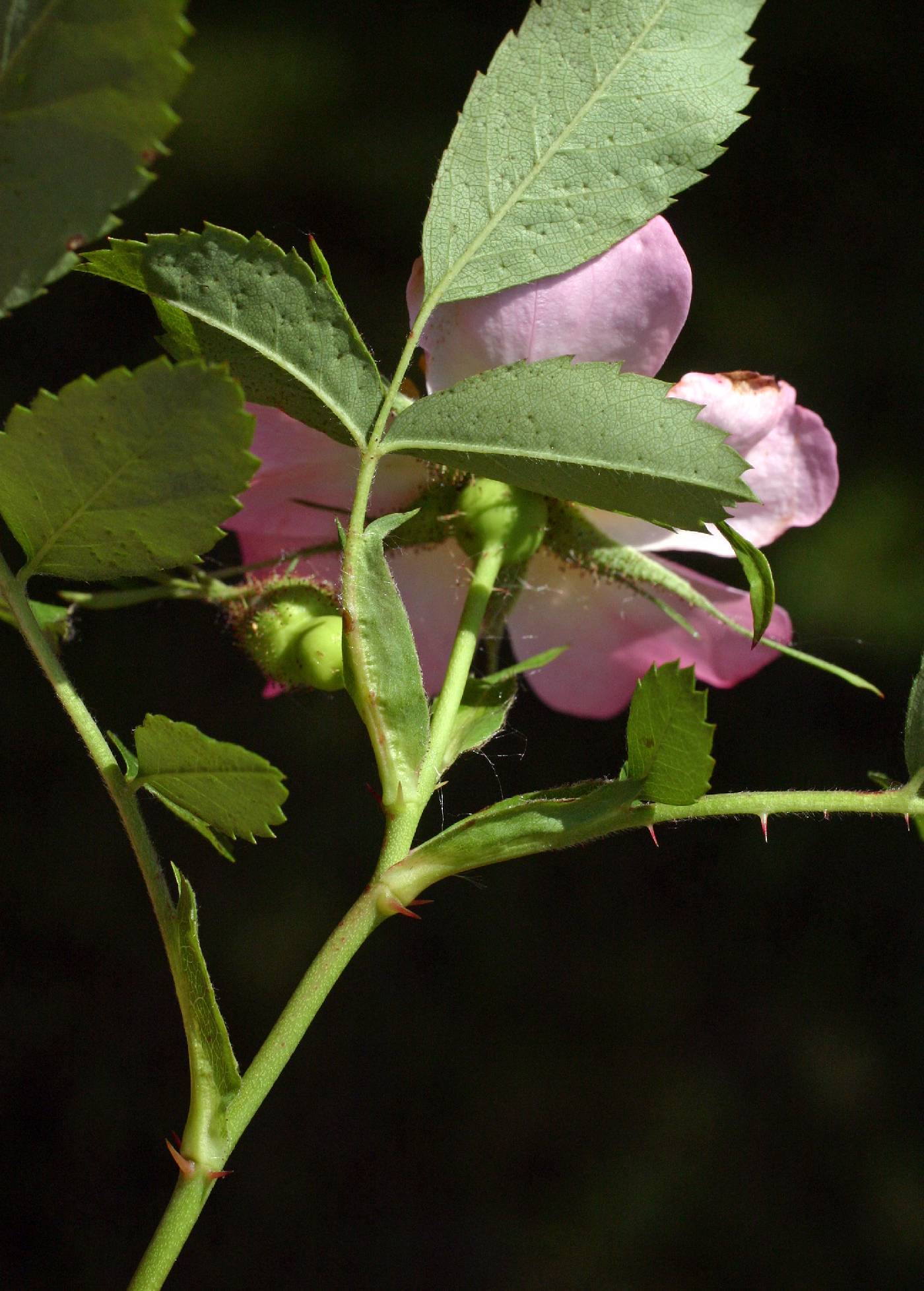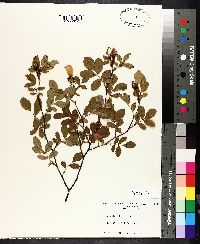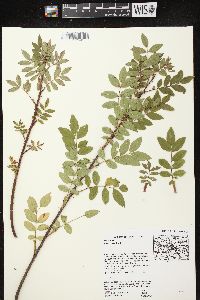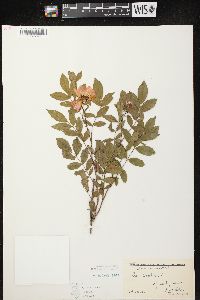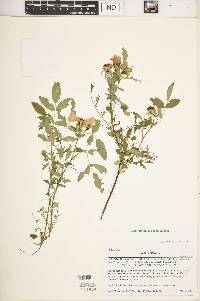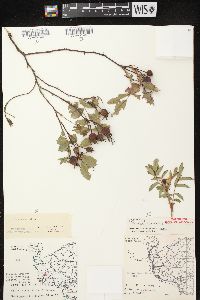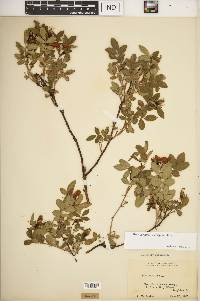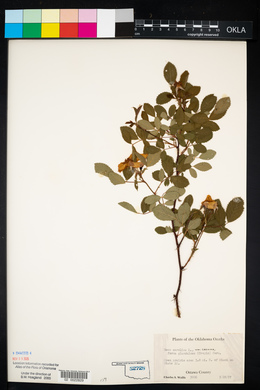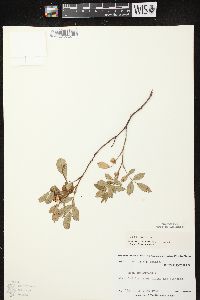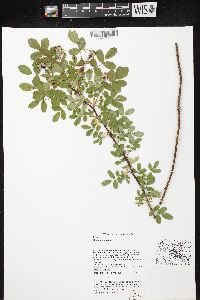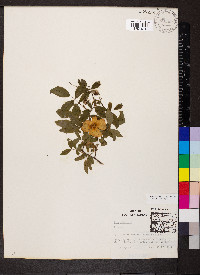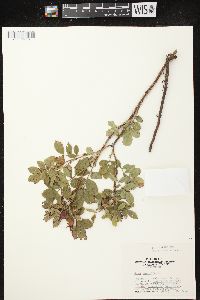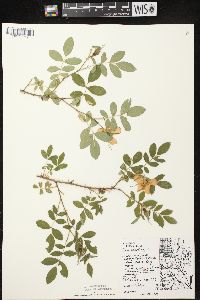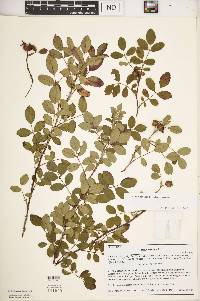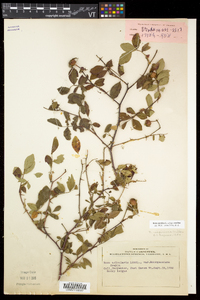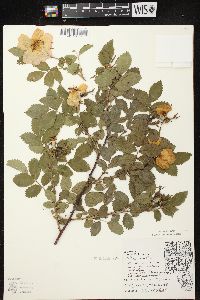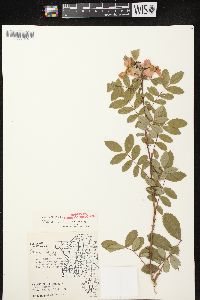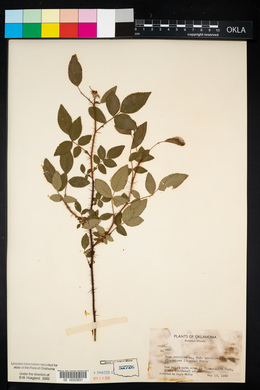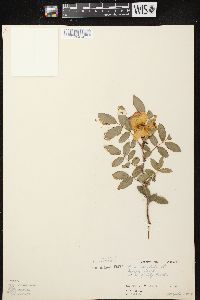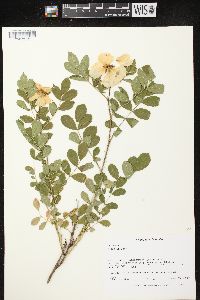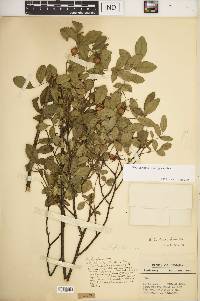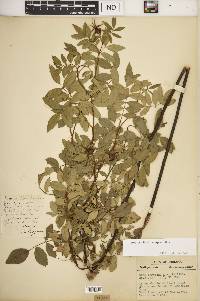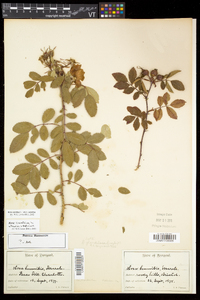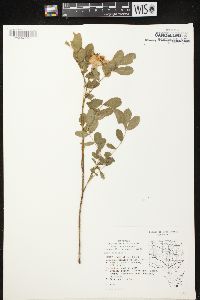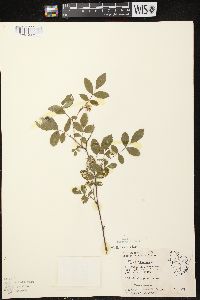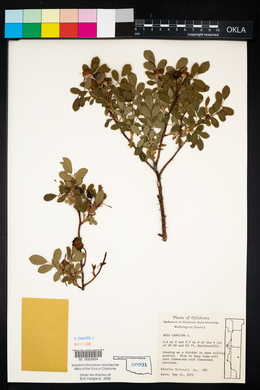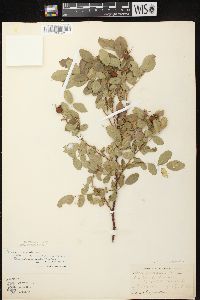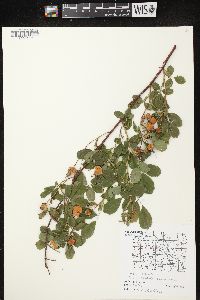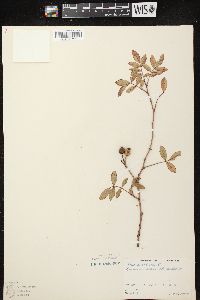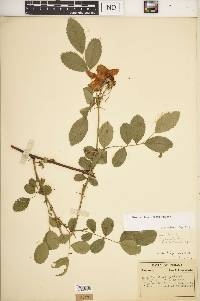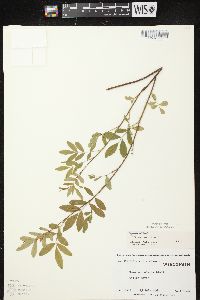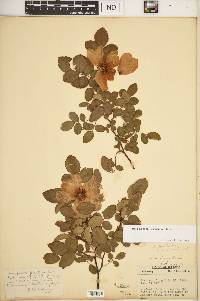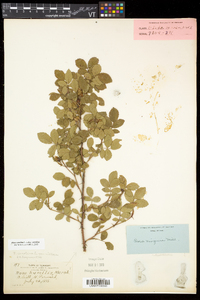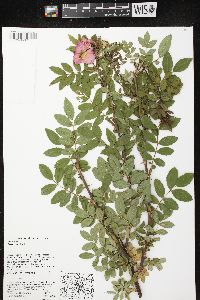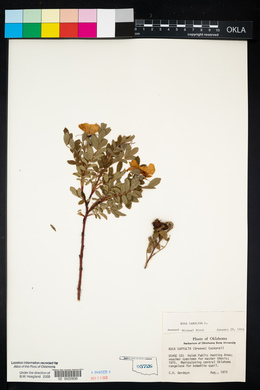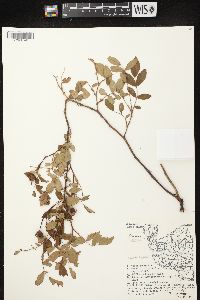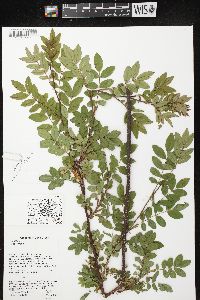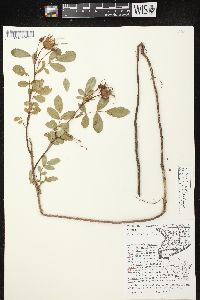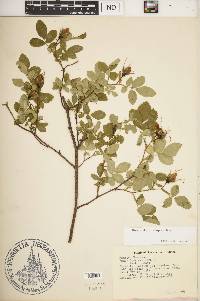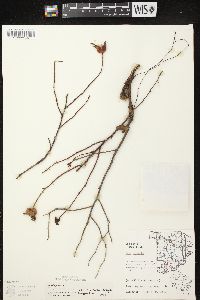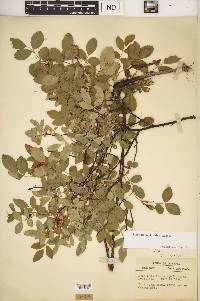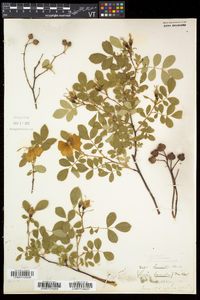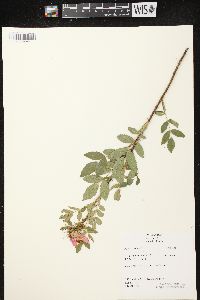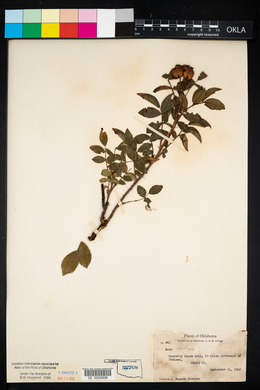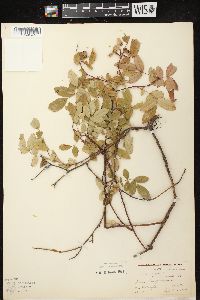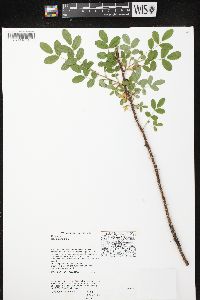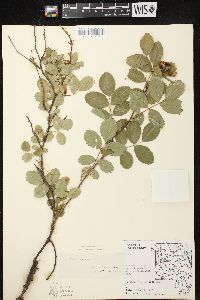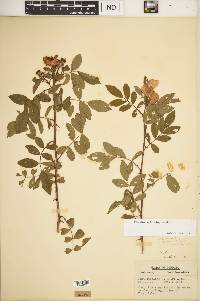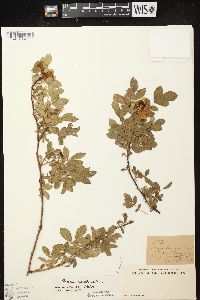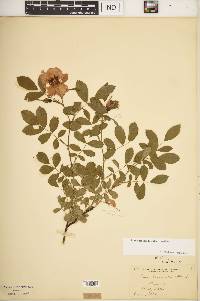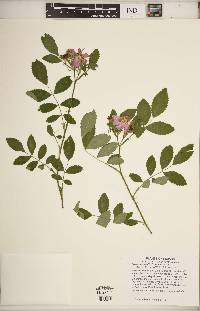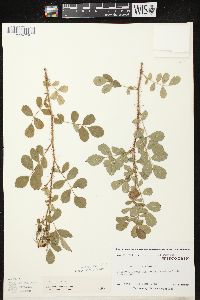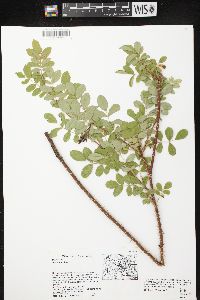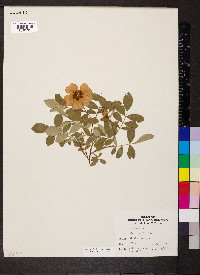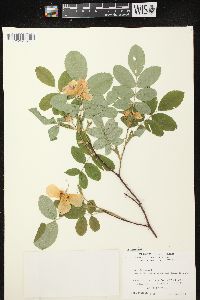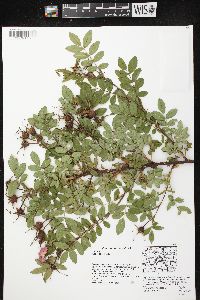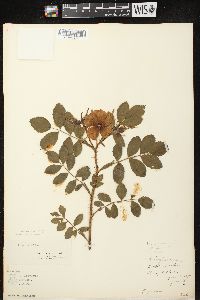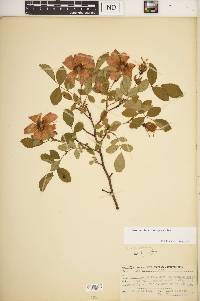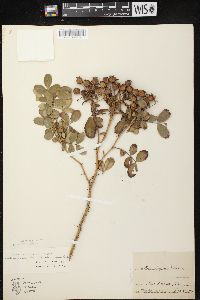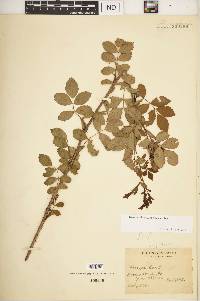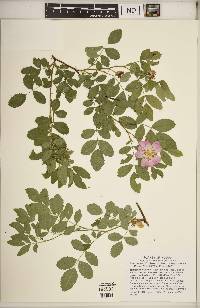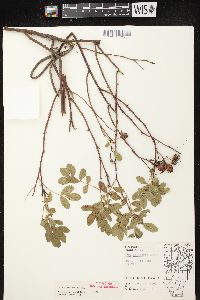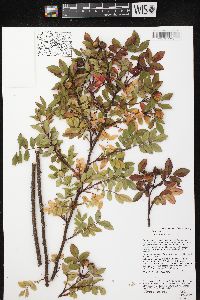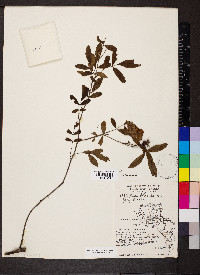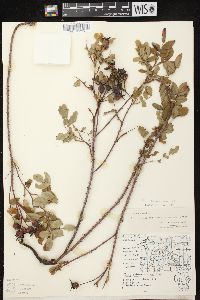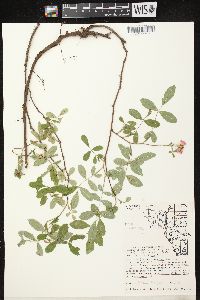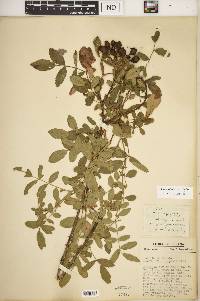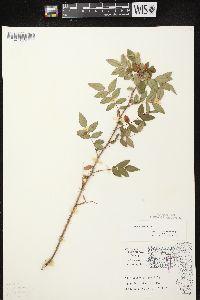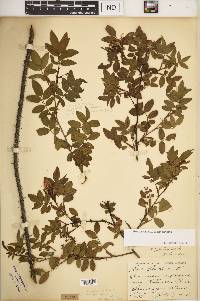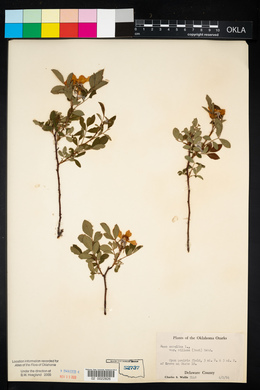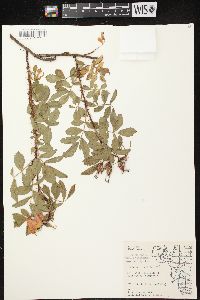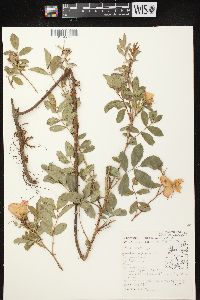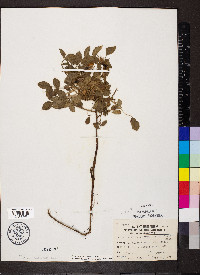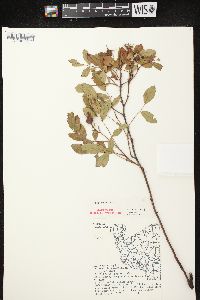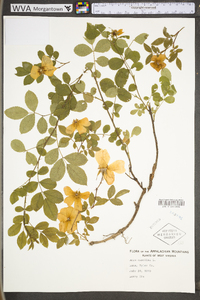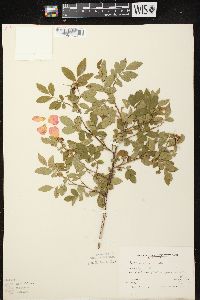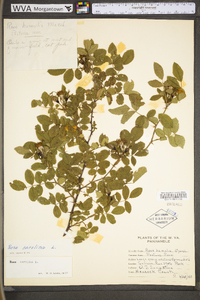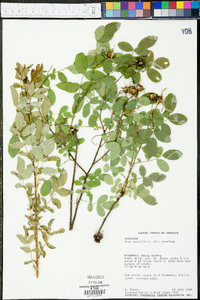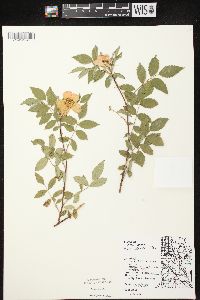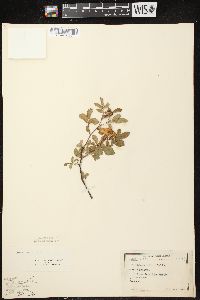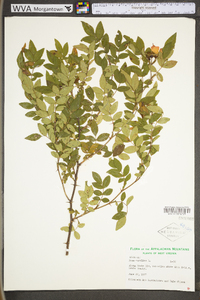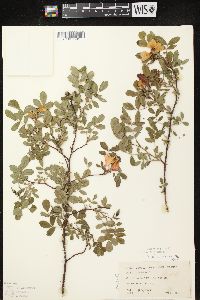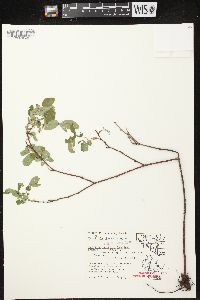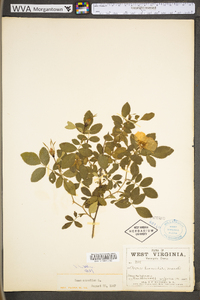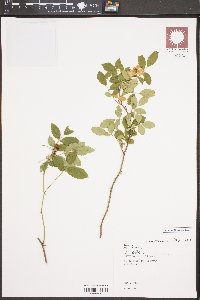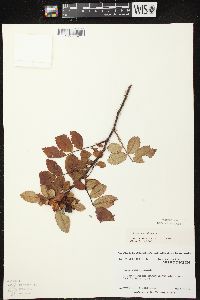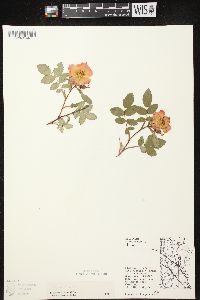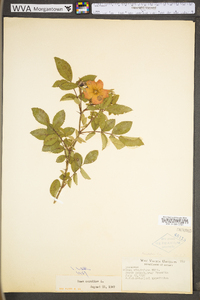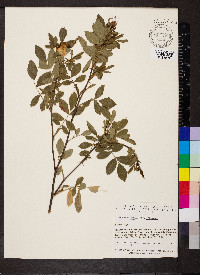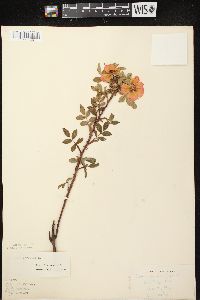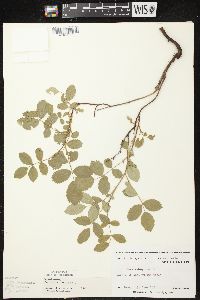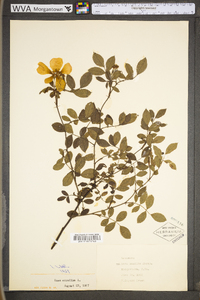Rosa carolina subsp. carolina
|
|
|
|
Family: Rosaceae
Carolina Rose
[Rosa carolina var. carolina L., moreRosa carolina var. deamii (Erlanson) Deam, Rosa carolina var. glandulosa (Crép.) Farw., Rosa carolina var. grandiflora (Baker) Rehder, Rosa carolina var. lyonii (Pursh) Palmer & Steyerm., Rosa carolina var. obovata (Raf.) Deam, Rosa carolina var. sabulosa Erlanson, Rosa carolina var. villosa (Best) Rehder, Rosa globosa Raf., Rosa lindleyi Spreng., Rosa parviflora Ehrh., Rosa pusilla Raf.] |
Colony-forming shrub to 1 m tall Stem: slender, unbranched to few-branched, densely prickly near base but becoming sparse near tip. The slender, straight prickles vary in length, are circular in cross-section, with the base less than half as long as the body. Prickles that subtend stipules are 4 - 9 mm long and straight to slightly reflexed. Leaves: pinnately compound, stalked, with five to seven leaflets. The leaflets are 1.5 - 4 cm long, usually more then half as wide as long, elliptic to narrow egg-shaped with a pointed to blunt tip, coarsely toothed (fewer than fifteen teeth per side), sometimes glandular on margins, dull or slightly shiny above, and paler and softly hairy beneath. Flowers: borne one to four in a cluster on current season's stems, 3.5 - 5.5 cm across, with a stalked-glandular stalk and floral tube (hypanthium), non-persistent spreading to reflexed sepals gradually tapering to a linear tip, lobed outer sepals, and pink petals 2 - 3 cm long. Fruit: bony achenes surrounded by the mature floral tube (hip). The hip is red, 8 - 12 mm across, and nearly spherical. Achenes dark brown, 4 - 5 mm long, inversely egg-shaped, sometimes with one straight side. Stipules: subtending leaves, glandular-toothed to non-toothed, firm, narrow, flat. Similar species: The typical variety of Rosa carolina is more or less hairless on the lower leaf surface. Flowering: late June to early August Occurence in the Chicago region: native Etymology: Rosa is the Latin name for a rose. Carolina means "from the Carolinas." Villosa means "covered in soft hairs." Author: The Morton Arboretum From Flora of Indiana (1940) by Charles C. Deam This is our most common rose and should be considered as frequent throughout the state. It is found in hard, clay soil, associated with white and black oak in open woodland and clearings, in very dry, sandy soils in all parts of the state, and rarely in wet or moist soil of our prairies. Indiana has the following named varieties: [Var. deamii -] This rare form has been found only in Tipton County in the area of the Indian Prairie along the railroad about a half mile west of Goldsmith. It is distinguished "by the recurved stems; long prickles; thick, shining, dark green foliage with coarse serrations; large flowers and hips. All parts are coarse and well developed." I have had this form under cultivation ever since I found it. [Var. glandulosa -] This form is distinguished by the double-serrate leaflets, by the secondary teeth ending in a stipitate gland, and by the entire part of the margins of the leaflets having stipitate glands. This form is not well marked in our area since specimens can be found with a few leaves with double-serrate leaflets with stipitate glands and the other leaves non-glandular or with simple serrations. I have specimens of this form from Clark, Floyd, and Franklin Counties. [Var. obovata -] This form is rather frequent in Indiana, especially in the northern part. It is distinguished by its broad, oval leaflets, stout prickles, and large flowers. [Var. sabulosa -] This form is characterized by the trailing habit of the old stems, "by the uniformly small leaflets on old wood, and by having the hypanthium and pedicels free from hispid glands." It is represented by specimens from Lake County. [Var. villosa -] This is a form with the under surface of the leaflets more or less densely pubescent. …… Indiana Coefficient of Conservatism: C = 4 Wetland Indicator Status: FACU |

